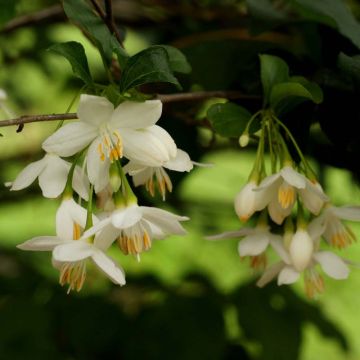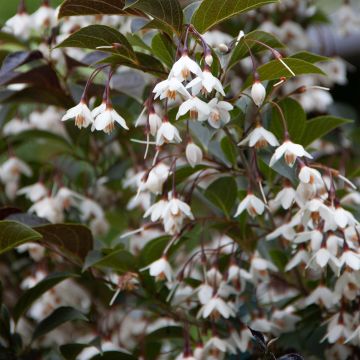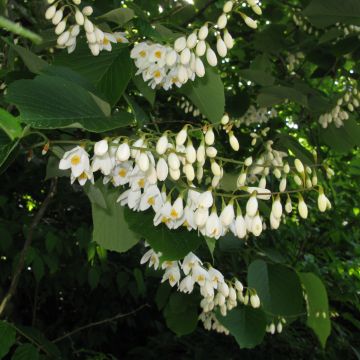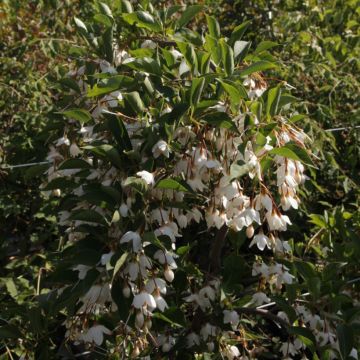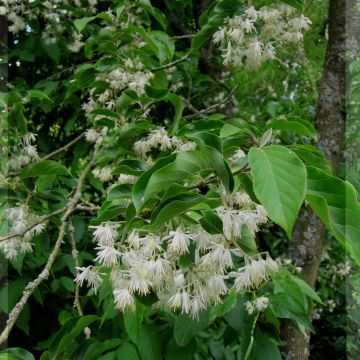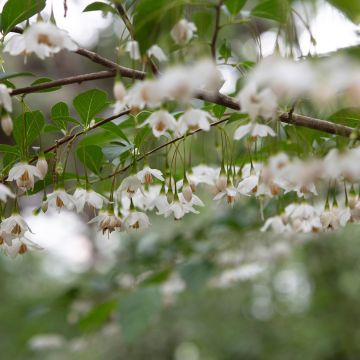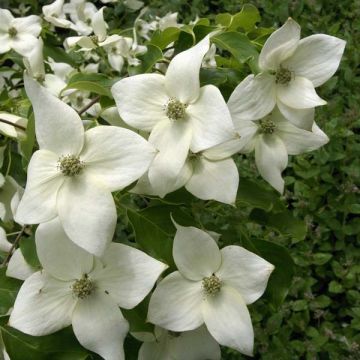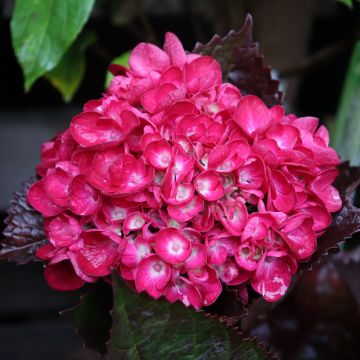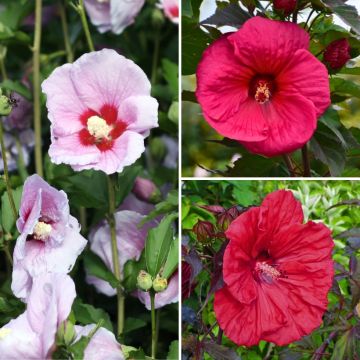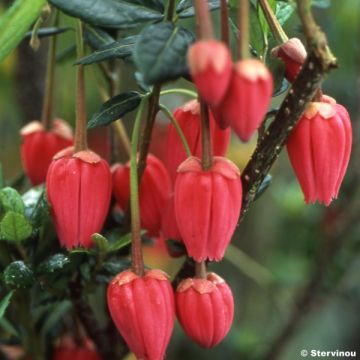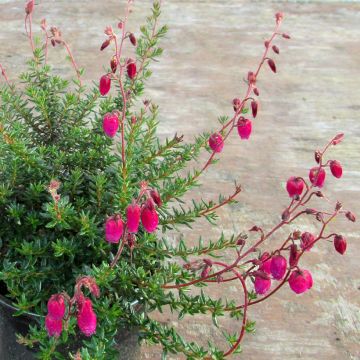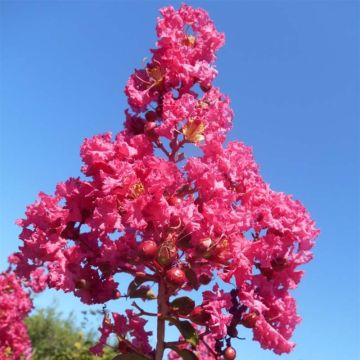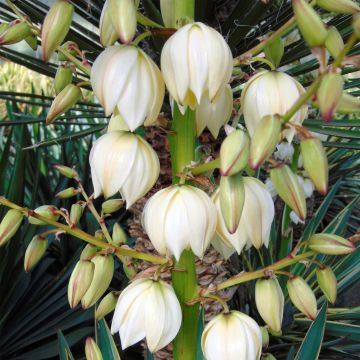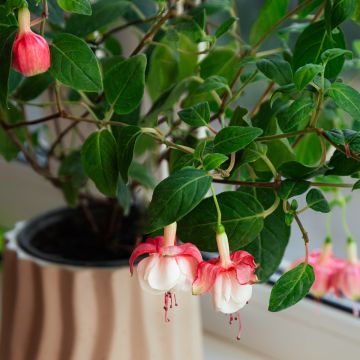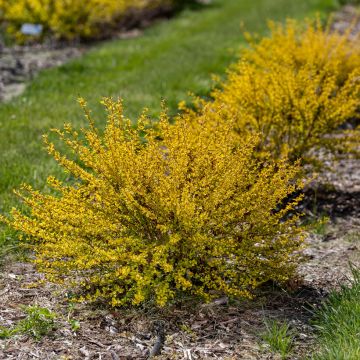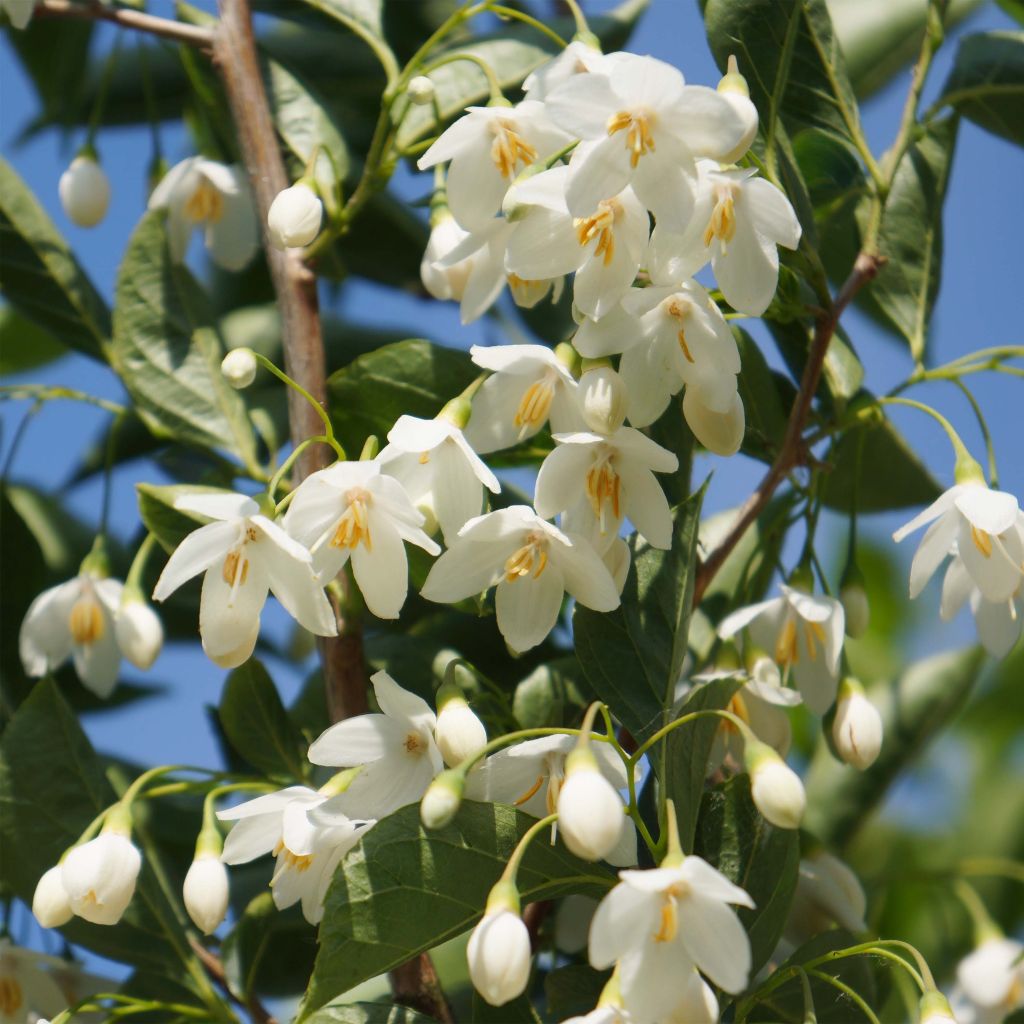

Styrax japonicus June snow - Styrax japonais
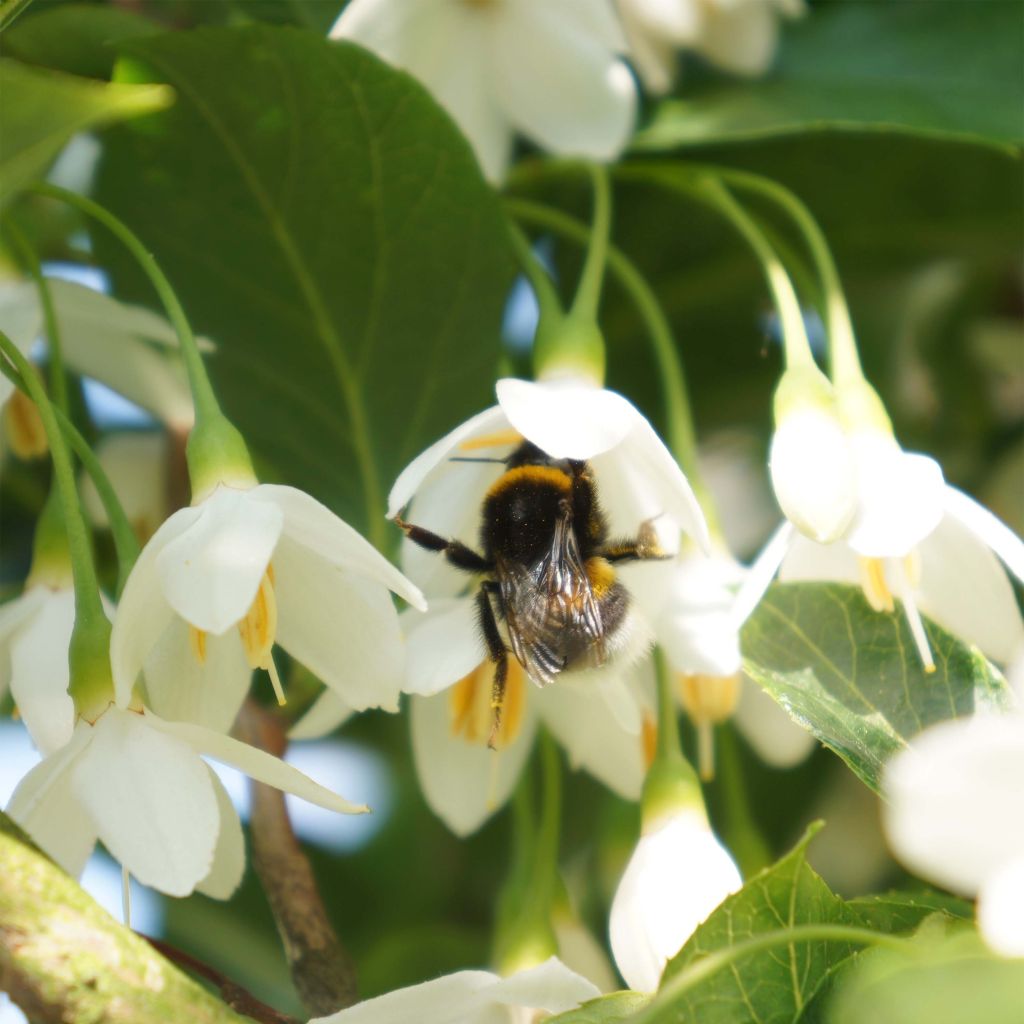

Styrax japonicus June snow - Styrax japonais
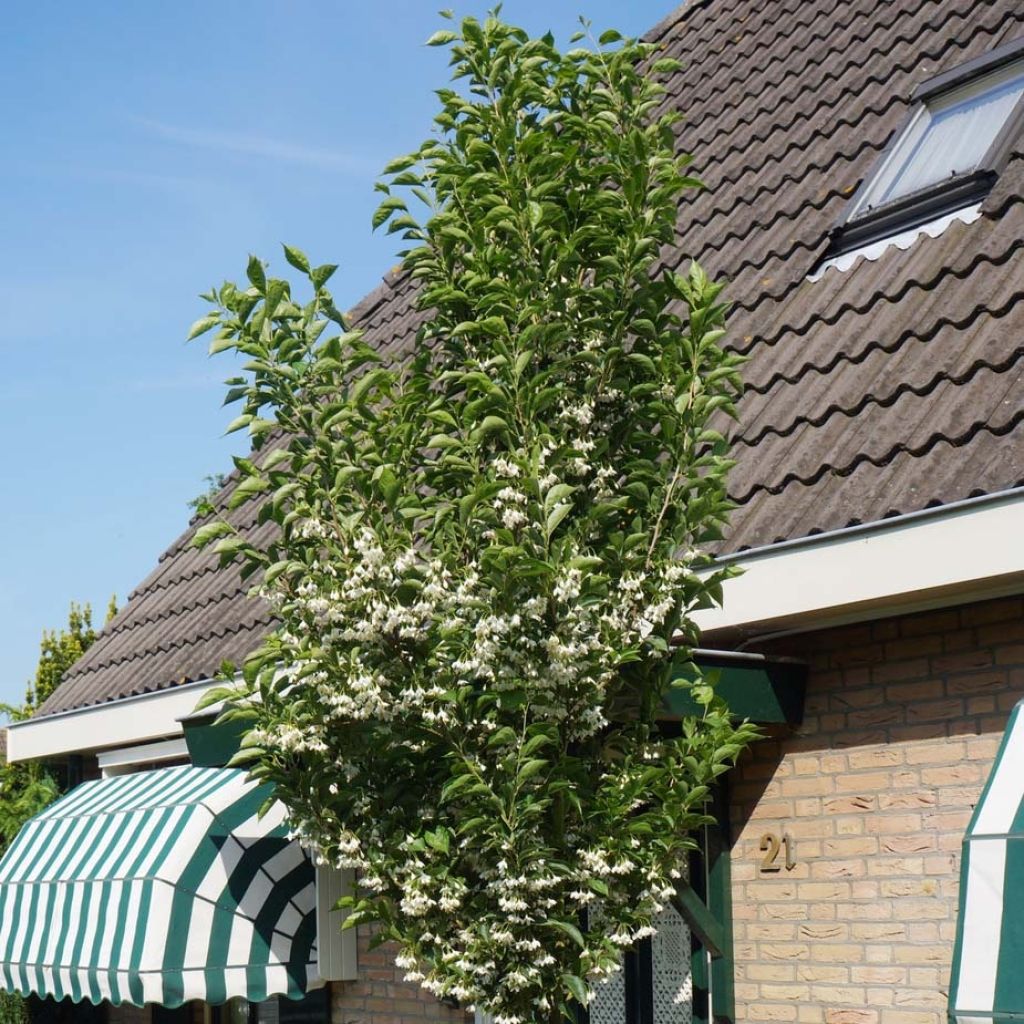

Styrax japonicus June snow - Styrax japonais
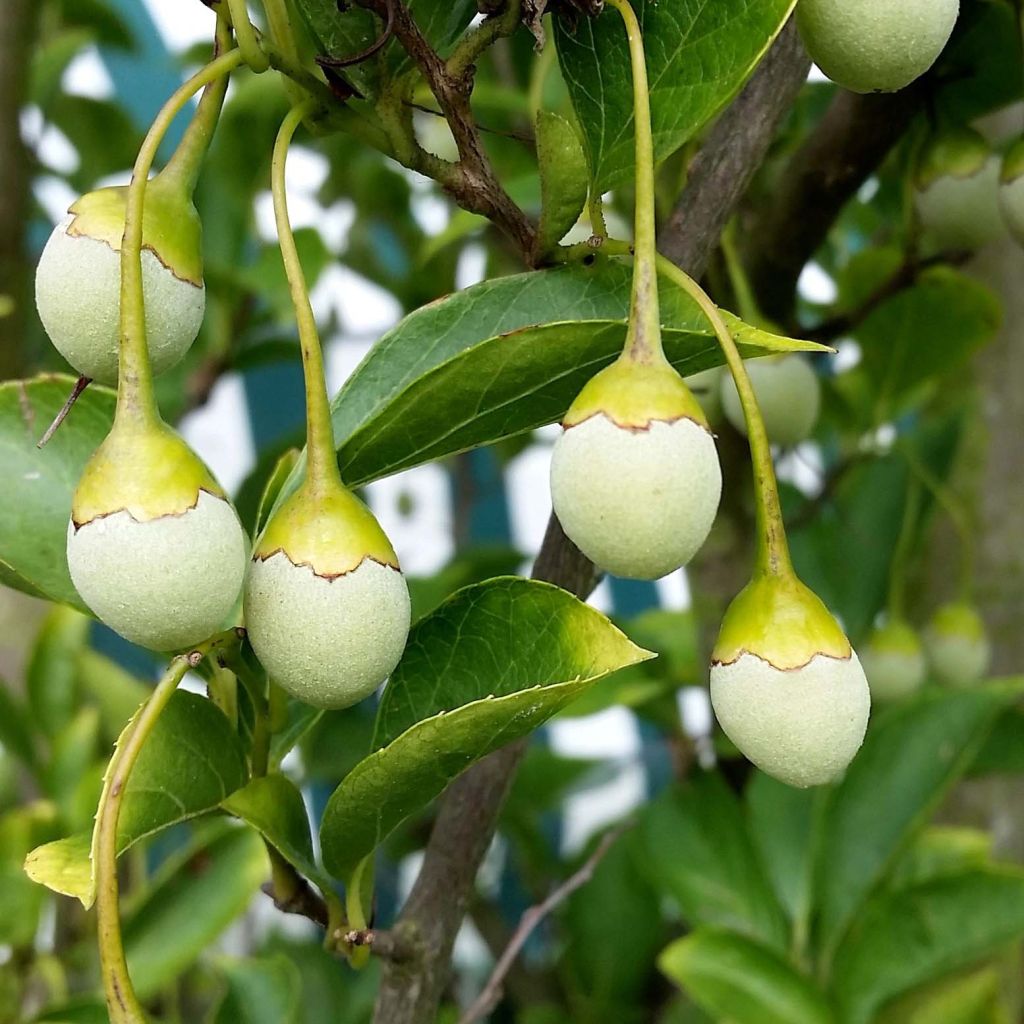

Styrax japonicus June snow - Styrax japonais
Styrax japonica June snow
Styrax japonica June snow
Japanese Snowbell
High-quality bush, with beautiful healthy roots.
Dominique, 03/11/2022
Why not try an alternative variety in stock?
View all →This plant carries a 24 months recovery warranty
More information
We guarantee the quality of our plants for a full growing cycle, and will replace at our expense any plant that fails to recover under normal climatic and planting conditions.
From €5.90 for pickup delivery and €6.90 for home delivery
Express home delivery from €8.90.

Does this plant fit my garden?
Set up your Plantfit profile →
Description
Styrax japonicus 'June Snow' is a wonderful small tree with a narrow habit that is covered in beautiful pendulous and fragrant flowers in June. Very hardy, compact, and particularly floriferous, it is a beautiful novelty for ornamenting small spaces, or terraces if planted in a large container. To admire it at your leisure, give it a prime location in an ericaceous bed alongside rhododendrons and azaleas.
Originating from Japan, Korea, and China, Japanese Styrax is a deciduous shrub in the Styracaceae family, composed of trees and shrubs with aromatic resin. It is a large ornamental shrub that prefers cool, humus-rich, non-calcareous soil and sunny but not scorching exposures. In recent years cultivars with reduced growth have emerged, such as 'June Snow', obtained in the Netherlands in 1995.
The 'June Snow' Styrax is a shrub of modest size and relatively slow growth. At maturity, it will reach about 4 m in height and 1 m (3ft) in width, depending on the growing conditions. In a container it will remain more compact. Its habit is distinctly upright, supported by branches of brown colour. The foliage, deciduous in winter, glossy, is composed of ovate leaves, 2.5 to 8.5 cm (1 to 3in) long, with dentate edges, of a bright green colour. Before falling in autumn they take on various shades of yellow and orange. In June, and sometimes until August, the branches are adorned with numerous pure white buds resembling snowflakes, which open into small, fragrant flowers. They are bell-shaped, 1.5 cm (1in) in diameter, with 5 ovate lobes, adorned with a bouquet of golden stamens in the centre. They are pendulous, solitary or in clusters, beneath the branches. This long-lasting flowering, much visited by pollinating insects, gives way to ovoid, dry fruits of olive green colour. This Styrax has excellent hardiness, around -24°C (1°F).
Styrax June Snow thrives in humus-rich, acidic, cool, and light soils - conditions that also appeal to hydrangeas, with which it combines beautifully. Plant as a solitary specimen near a pathway, or close to the house to fully enjoy its beauty and fragrance. It also stands out on the terrace or balcony, placed in a carefully chosen large pot. It can be associated with low, bushy shrubs such as dwarf rhododendrons, Japanese azaleas (in partial shade), or heathers. Adorn its base with e.g. a small, variegated creeping euonymus (Emerald Gaiety), small periwinkles, and Naples or coum cyclamens.
Report an error about the product description
Styrax japonica June snow in pictures
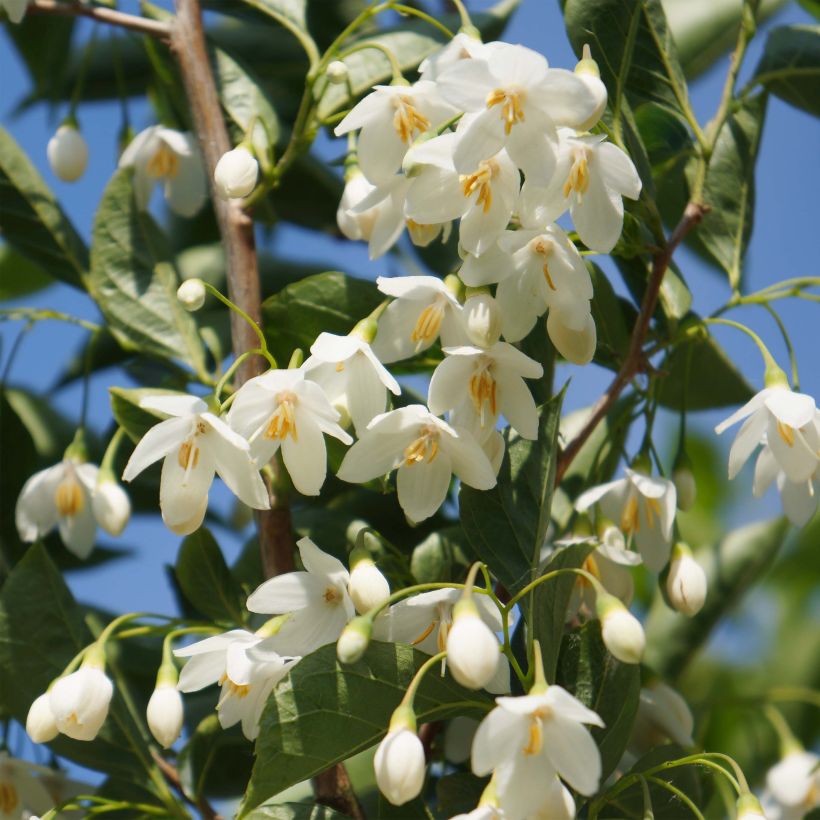

Plant habit
Flowering
Foliage
Botanical data
Styrax
japonica
June snow
Styracaceae
Japanese Snowbell
Cultivar or hybrid
Other Styrax
Planting and care
Plant Styrax japonicus June Snow in spring or autumn, in partial shade or full sun, avoiding the hottest sites in the garden. It likes acidic, humus-rich, moist, fertile and light soils, like hydrangeas, Pieris and camellias. Choose a location sheltered from the wind. Hardy down to -24°C (1°F), Styrax June Snow dislikes alkaline soils and dry, hot climates. This bush is not very susceptible to pests and diseases. Pruning is not necessary.
Planting period
Intended location
Care
-
, onOrder confirmed
Reply from on Promesse de fleurs
Summer-flowering shrubs
Haven't found what you were looking for?
Hardiness is the lowest winter temperature a plant can endure without suffering serious damage or even dying. However, hardiness is affected by location (a sheltered area, such as a patio), protection (winter cover) and soil type (hardiness is improved by well-drained soil).

Photo Sharing Terms & Conditions
In order to encourage gardeners to interact and share their experiences, Promesse de fleurs offers various media enabling content to be uploaded onto its Site - in particular via the ‘Photo sharing’ module.
The User agrees to refrain from:
- Posting any content that is illegal, prejudicial, insulting, racist, inciteful to hatred, revisionist, contrary to public decency, that infringes on privacy or on the privacy rights of third parties, in particular the publicity rights of persons and goods, intellectual property rights, or the right to privacy.
- Submitting content on behalf of a third party;
- Impersonate the identity of a third party and/or publish any personal information about a third party;
In general, the User undertakes to refrain from any unethical behaviour.
All Content (in particular text, comments, files, images, photos, videos, creative works, etc.), which may be subject to property or intellectual property rights, image or other private rights, shall remain the property of the User, subject to the limited rights granted by the terms of the licence granted by Promesse de fleurs as stated below. Users are at liberty to publish or not to publish such Content on the Site, notably via the ‘Photo Sharing’ facility, and accept that this Content shall be made public and freely accessible, notably on the Internet.
Users further acknowledge, undertake to have ,and guarantee that they hold all necessary rights and permissions to publish such material on the Site, in particular with regard to the legislation in force pertaining to any privacy, property, intellectual property, image, or contractual rights, or rights of any other nature. By publishing such Content on the Site, Users acknowledge accepting full liability as publishers of the Content within the meaning of the law, and grant Promesse de fleurs, free of charge, an inclusive, worldwide licence for the said Content for the entire duration of its publication, including all reproduction, representation, up/downloading, displaying, performing, transmission, and storage rights.
Users also grant permission for their name to be linked to the Content and accept that this link may not always be made available.
By engaging in posting material, Users consent to their Content becoming automatically accessible on the Internet, in particular on other sites and/or blogs and/or web pages of the Promesse de fleurs site, including in particular social pages and the Promesse de fleurs catalogue.
Users may secure the removal of entrusted content free of charge by issuing a simple request via our contact form.
The flowering period indicated on our website applies to countries and regions located in USDA zone 8 (France, the United Kingdom, Ireland, the Netherlands, etc.)
It will vary according to where you live:
- In zones 9 to 10 (Italy, Spain, Greece, etc.), flowering will occur about 2 to 4 weeks earlier.
- In zones 6 to 7 (Germany, Poland, Slovenia, and lower mountainous regions), flowering will be delayed by 2 to 3 weeks.
- In zone 5 (Central Europe, Scandinavia), blooming will be delayed by 3 to 5 weeks.
In temperate climates, pruning of spring-flowering shrubs (forsythia, spireas, etc.) should be done just after flowering.
Pruning of summer-flowering shrubs (Indian Lilac, Perovskia, etc.) can be done in winter or spring.
In cold regions as well as with frost-sensitive plants, avoid pruning too early when severe frosts may still occur.
The planting period indicated on our website applies to countries and regions located in USDA zone 8 (France, United Kingdom, Ireland, Netherlands).
It will vary according to where you live:
- In Mediterranean zones (Marseille, Madrid, Milan, etc.), autumn and winter are the best planting periods.
- In continental zones (Strasbourg, Munich, Vienna, etc.), delay planting by 2 to 3 weeks in spring and bring it forward by 2 to 4 weeks in autumn.
- In mountainous regions (the Alps, Pyrenees, Carpathians, etc.), it is best to plant in late spring (May-June) or late summer (August-September).
The harvesting period indicated on our website applies to countries and regions in USDA zone 8 (France, England, Ireland, the Netherlands).
In colder areas (Scandinavia, Poland, Austria...) fruit and vegetable harvests are likely to be delayed by 3-4 weeks.
In warmer areas (Italy, Spain, Greece, etc.), harvesting will probably take place earlier, depending on weather conditions.
The sowing periods indicated on our website apply to countries and regions within USDA Zone 8 (France, UK, Ireland, Netherlands).
In colder areas (Scandinavia, Poland, Austria...), delay any outdoor sowing by 3-4 weeks, or sow under glass.
In warmer climes (Italy, Spain, Greece, etc.), bring outdoor sowing forward by a few weeks.

































